
Archaius, Vol. 2, No. 2, 2025
Submitted 20.06.2025
Published 29.09.2025
Speculative Implications of an Invasive Plant Desmodium uncinatum on Ecology and Chameleon Survival
Michael Nash
Corresponding author: MNash@mednet.ucla.edu
Abstract
The introduction of non-native plant species can have profound and often unforeseen consequences on fragile ecosystems. This article explores the ecological impact of Desmodium uncinatum (Silverleaf Desmodium), an invasive legume introduced to Madagascar for agricultural purposes. Recent field observations and a published case report document fatalities of Calumma oshaughnessyi (O'Shaughnessy's chameleon) due to entrapment in the plant's Velcro-like hairs. We examine the plant's spread, its effect on native wildlife, implications for captive husbandry, and broader conservation concerns. Additionally, we integrate new findings on plantar lesions in chameleons caused by toxic or abrasive plant surfaces, highlighting the intersection of invasive flora and reptilian health.
Keywords: Desmodium uncinatum, invasive species, Calumma oshaughnessyi, plantar lesions, chameleon mortality, Madagascar, ecological disruption
Introduction
Madagascar's biodiversity is globally renowned, yet increasingly imperiled by habitat loss, climate change, and biological invasions. Among the latter, Desmodium uncinatum, a South American legume introduced as cattle forage, has emerged as a silent threat. Its sticky, hooked hairs ensnare small animals, including reptiles, amphibians, and insects, leading to immobilization and death (Wildlife Madagascar 2025). While invasive plants are often overlooked in conservation discourse, their impact on trophic dynamics and species survival can be severe.
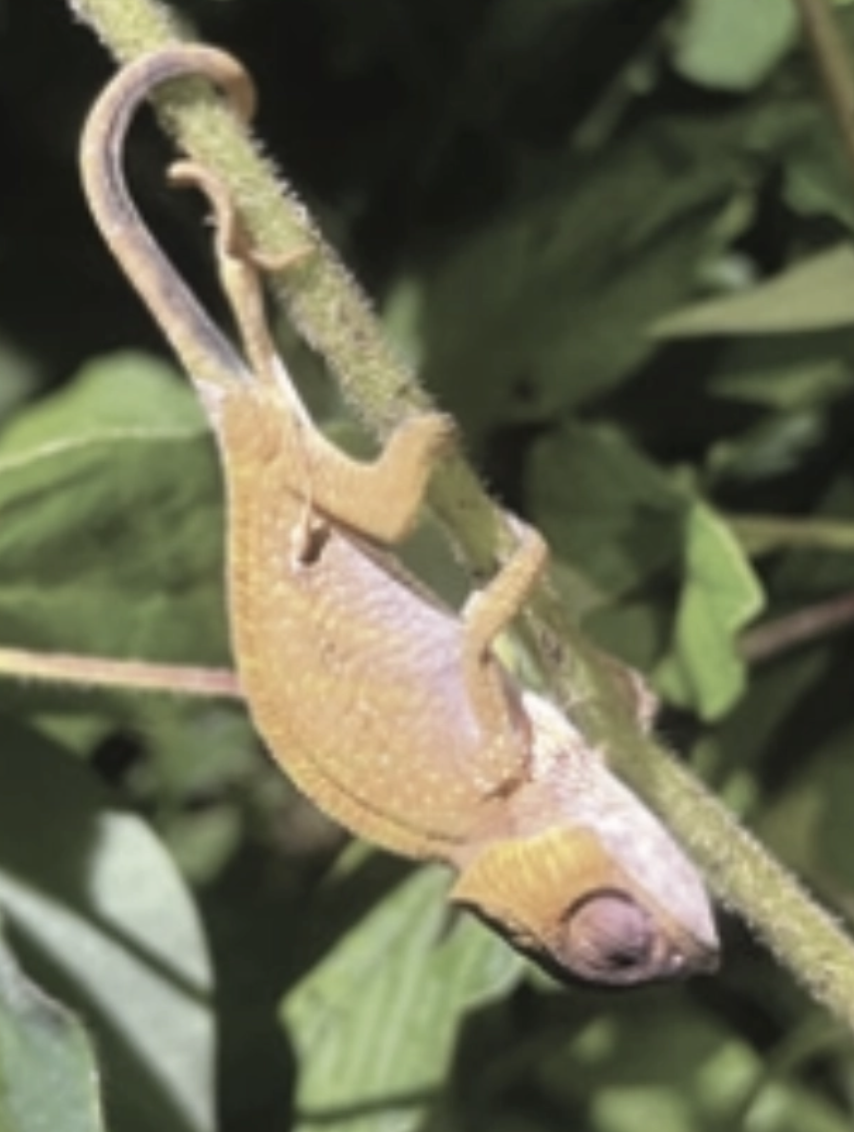
Case Report: Chameleon Mortality in Ranomafana National Park
In 2023 and 2024, two juvenile Calumma oshaughnessyi were found dead in Ranomafana National Park, Madagascar, entangled in D. uncinatum stems. The plant's trichomes had gripped each limb and the tail, rendering escape impossible. The individuals likely died from dehydration or exposure. This was the first documented case of chameleon mortality due to Desmodium in Madagascar (Nash and Adriamihaija 2024). Additional anecdotal reports from guides and researchers suggest similar incidents involving frogs and bats (Negro 2025).
Distribution and Spread of Desmodium uncinatum
Originally introduced for livestock feed, D. uncinatum has spread across eastern Madagascar, including regions near Vohimana and Ranomafana. Its full range remains poorly mapped due to limited botanical surveying. The plant's perennial growth and aggressive vegetative spread allow it to blanket forest floors, outcompeting native flora and creating physical hazards for small fauna (Wildlife Madagascar 2025).
Mechanism of Entrapment and Ecological Consequences
The plant's stems are covered in dense, Velcro-like hairs that adhere to skin, fur, and scales. Once ensnared, animals are unable to free themselves without external intervention. Field observations indicate that even careful removal attempts result in skin damage or limb loss. Decomposition of trapped animals occurs in situ, with minimal evidence of scavenging, suggesting that the plant's texture may deter predators (Nash & Adriamihaija 2024:439; Tour Guide Madagascar 2024, pers. comm).
This phenomenon implies a disruption of nutrient cycling, as carcasses remain unconsumed. Additionally, the plant's proximity to nesting sites raises concerns about entire clutches of hatchlings being wiped out during emergence, especially in the rainy season when Desmodium growth surges.
Plantar Lesions and Toxic Plant Interactions
Recent field and captive studies have documented plantar irritations, infections, and lesions in chameleons caused by contact with toxic or abrasive plant surfaces. Chameleons possess highly specialized feet—chamaeleodactylous in structure—with fused digits and smooth plantar surfaces adapted for grasping branches (Chameleons.info 2024). These microstructures are vital for locomotion and balance, and any disruption can lead to stress, immobility, and death.
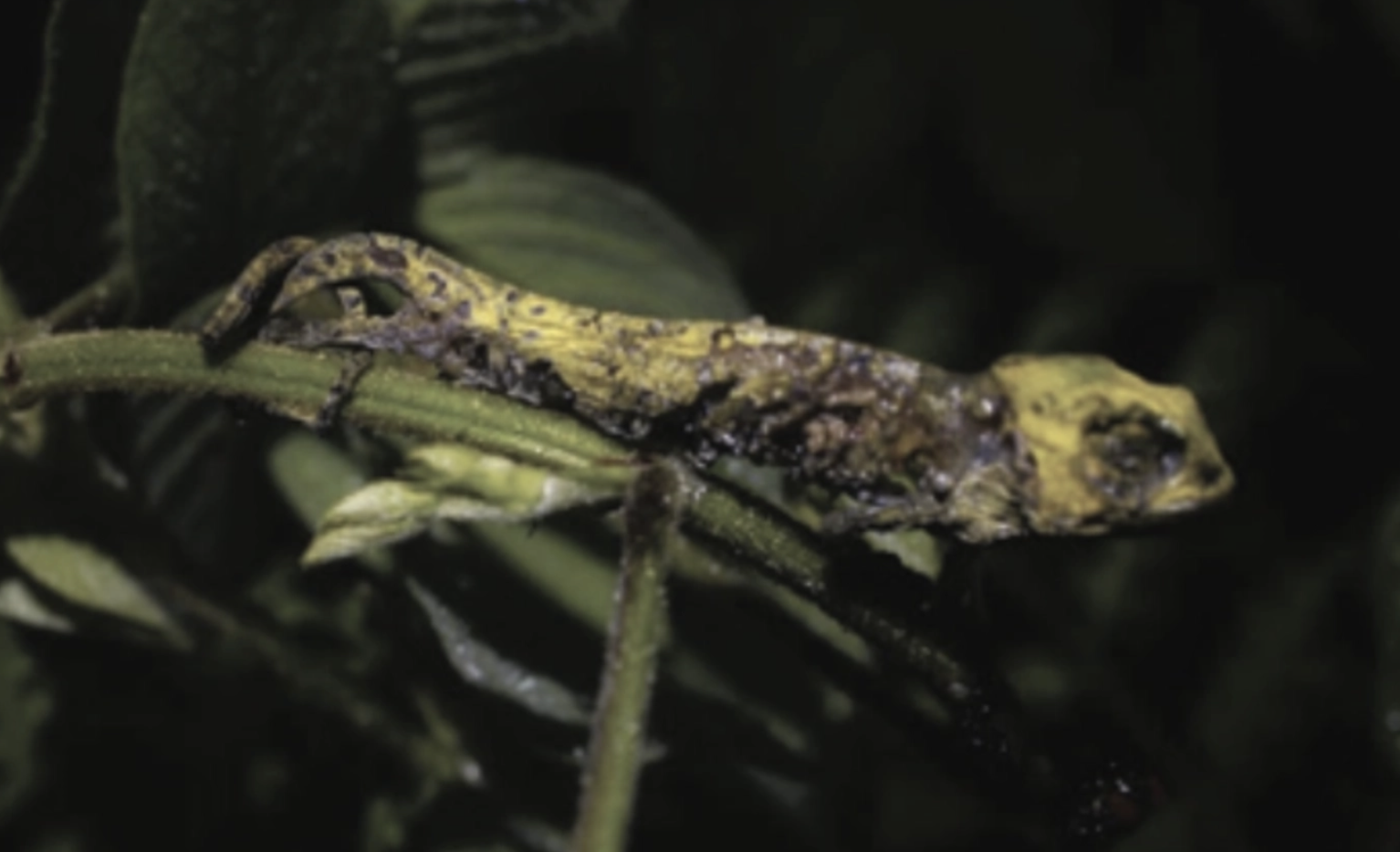
In the wild, lesions have been observed in chameleons exposed to introduced species such as Pinus patula, Euphorbia cotinifolia, Ficus pumila, and bamboo (Fargesia spp.), all of which produce toxic sap or sharp microfibers that damage the soles (Chameleons.info 2024). In captivity, similar injuries result from excessive moisture, chemical-treated branches, and toxic ornamental plants. These findings reinforce the need for careful plant selection in both wild restoration and captive husbandry.
Implications for Captive Husbandry and Behavioral Ecology
The inability of chameleons to recognize Desmodium as hazardous may stem from a lack of evolutionary exposure. In captivity, chameleons often select climbing substrates based on tactile and visual cues. If these cues are absent or misleading, individuals may engage with unsafe plants. This suggests a "behavioral blind spot" in plant selection, with implications for enclosure design and plant sourcing (Nash and Adriamihaija 2024).
Efforts to introduce native Malagasy plants into captive environments may mitigate this risk. Mimicking native biomes could enhance behavioral compatibility and reduce injury.
Conservation Response and Community Engagement
Following the publication of the case report, conservation groups including Wildlife Madagascar and the Chameleon Academy initiated removal campaigns. Educational posters were distributed across schools and villages, and local communities were empowered to identify and eradicate Desmodium from forest margins (Wildlife Madagascar 2025). Over 30 NGOs and government bodies have joined the effort, marking a rare example of coordinated response to a plant-based threat.
Conclusion
The mortality of Calumma oshaughnessyi due to Desmodium uncinatum underscores the ecological risks posed by invasive plants. Beyond direct fatalities, the plant disrupts predator-prey dynamics, threatens reproductive success, and challenges captive care protocols. The integration of plantar lesion data further highlights the vulnerability of chameleons to plant-based injuries. Continued monitoring, habitat restoration, and public education are essential to mitigate its impact. This case exemplifies how small-scale observations can catalyze large-scale conservation action.
References
Chameleons.info. 2024. Plantar Irritations, Infections and Lesions in Chameleons. Retrieved from https://www.chameleons.info/l/plantar-irritations-infections-and-lesions-in-chameleons/
Madcham.de. 2020. Chameleon predators on Madagascar. Retrieved from https://www.madcham.de/en/fressfeinde-von-chamaeleons-auf-madagaskar/
Nash, M. J., & P. Adriamihaija. 2024. Calumma oshaughnessyi (O'Shaughnessy's chameleon). Mortality. Herpetological Review 55(3): 439.
Negro, A. 2025. Invasive plant kills chameleons. AG Chamäleons. Retrieved from https://www.agchamaeleons.de/en/invasive-pflanze-toetet-chamaeleons/
Wildlife Madagascar. 2025. Invasive Species: Silverleaf Desmodium. Retrieved from https://wildlifemadagascar.org/plants/invasive-species/
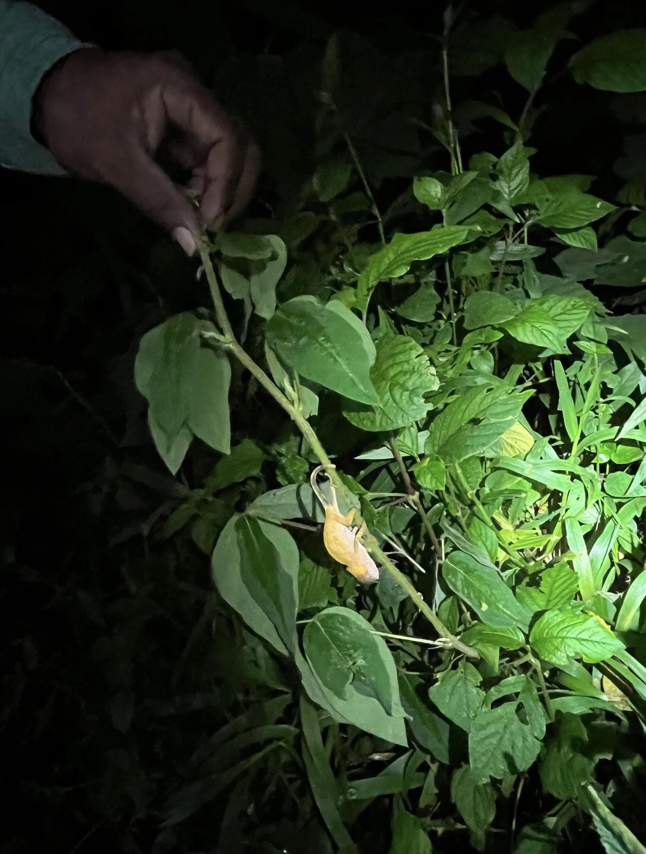
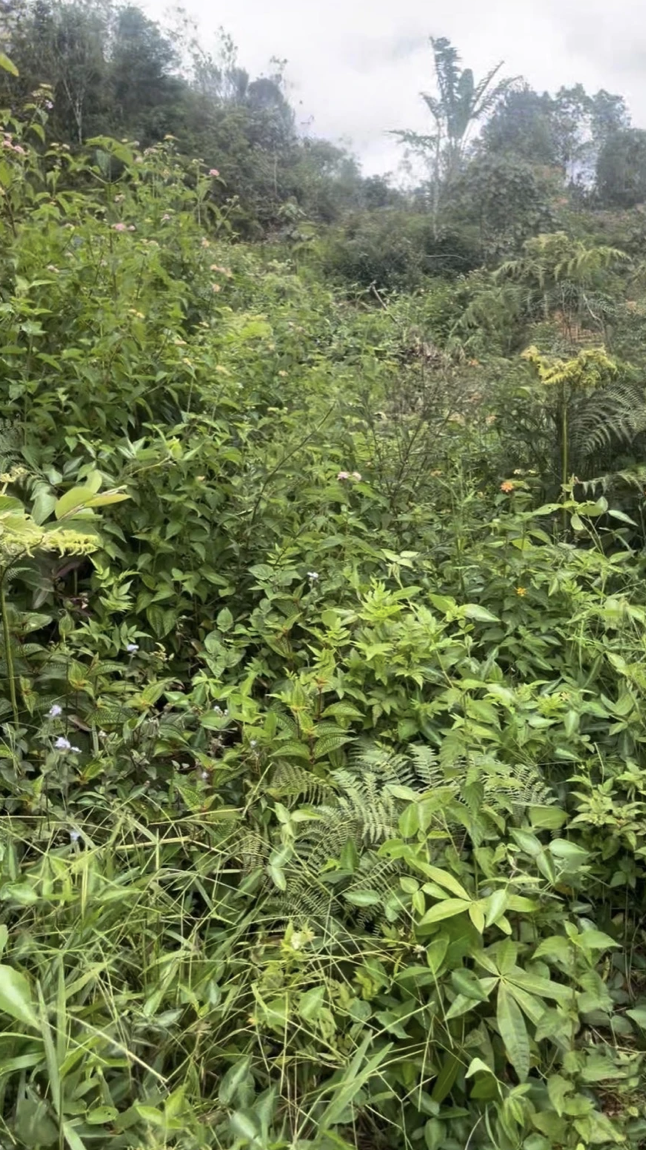
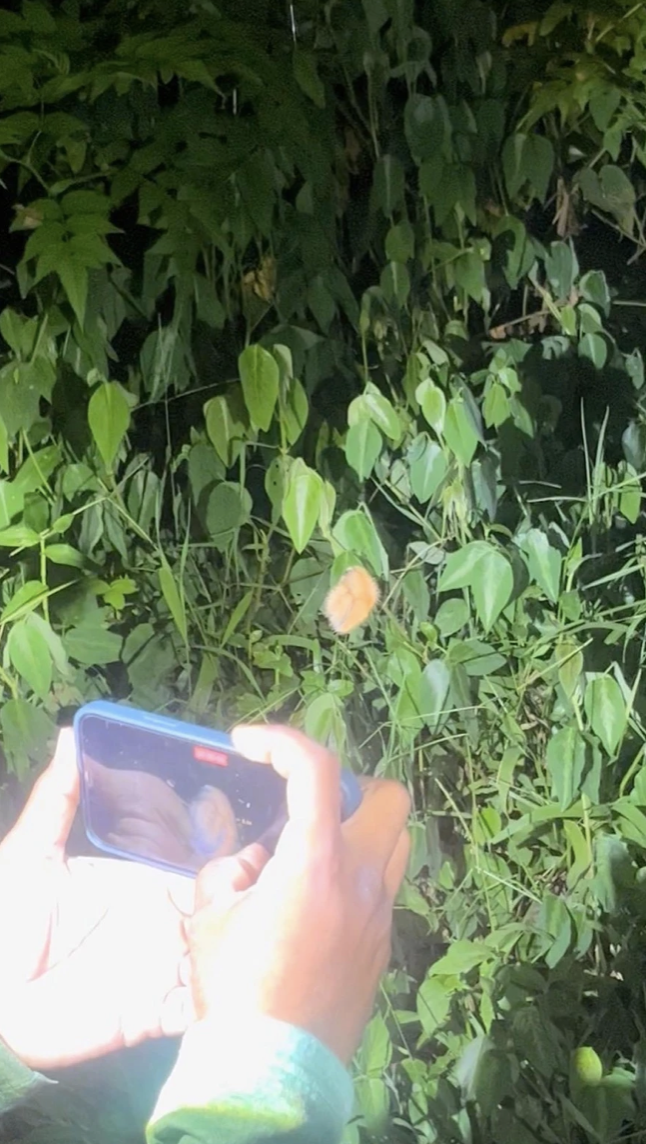
Fig. 3: Juvenile Calumma oshaughnessyi trapped by Desmodium uncinatum at Ranomafana, Madagascar. Photo Michael Nash.
Fig. 4,5: Desmodium uncinatum mixed in with plants in the back, starting to overtake in Ranomafana (4) and Maromizaha (5) respectively. Photo Michael Nash.
Nash, M. (2025): Speculative Implications of an Invasive Plant Desmodium uncinatum on Ecology and Chameleon Survival. Archaius 2(2): 1
Page 1
